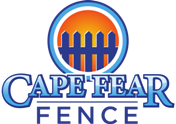Most people have a vague idea of what termites look like, but tend to confuse them with their smaller cousins, ants. If you suspect that your wooden fence or deck has been damaged by termites, here are some ways to identify them, according to our Leland fence repair contractor.
Drywood Termites
There are two different types of termites that can infest a wooden fence: Drywood termites, and subterranean termites. Drywood termites live in wood that’s above ground, such as fences, and can survive without any soil contact. They can be identified by their red bodies and black wings, as well as the small, firm pellets of waste they leave behind.
While drywood termites work more slowly and have smaller colony sizes than subterranean termites, they can be difficult to control because they often remain hidden inside the wood they feed on, making it easy for them to go unnoticed. Drywood termite colonies grow slowly over extended periods of time, and if they go undetected for months or years, they can cause substantial damage.
Subterranean Termites
Subterranean termites live in large colonies underground, which are composed of elaborate tunnels and chambers. They usually work from the ground level up, often entering a home through a crawl space or similar sub-structure. Subterranean termite damage looks a bit like a honeycomb, with tunnels woven throughout the soft inside wood. Wood damaged by this type of termite will break easily, revealing hollowed-out insides that are filled with mud or soil. However, it can be difficult to discover subterranean termite damage, because the external wood grain will usually be unbroken.
What Do I Do if There are Termites in My Fence?
If you have discovered that your wooden fence has a termite infestation, the easiest thing to do is to have a Leland fence repair company remove the fence and replace it with an insect-resistant option. Aluminum fences, ornamental steel fences, and vinyl fences are all termite-proof alternatives. Or, if you like the look of wood, you could use pressure-treated pine that has been treated with a preservative. Because the pressure pushes the preservative deep into the wood, it’s more effective than simply painting your fence.
Need a Fence Replacement in Leland?
Confused about termite control? Planning a new fence and want it to be bug-proof? Call your friends at Cape Fear Fence! We’ll advise you on the best fence material for your needs and budget, and make your fence installation as clean, fast and efficient as possible. To schedule a free estimate, click here.
 Family Owned & Operated
Family Owned & Operated Licensed & Insured
Licensed & Insured All Service Guaranteed
All Service Guaranteed MENU
MENU FREE ESTIMATES
FREE ESTIMATES
